33 found, showing page 2 of 3
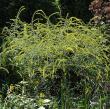
Plant Height: 3 feet
Flower Height: 4 feet
Spacing: 24 inches
Sunlight: full sun partial shade
Hardiness Zone: 4a
Ornamental Features:
Fireworks Goldenrod has masses of beautiful ray-like plumes of gold flowers at the ends of the stems from late summer to late fall, which are most effective when planted in groupings. Its narrow leaves remain forest green in color throughout the season.
Landscape Attributes:
Fireworks Goldenrod is an herbaceous perennial with an upright spreading habit of growth. Its medium texture blends into the garden, but can always be balanced by a couple of finer or coarser plants for an effective composition.
This plant will require occasional maintenance and upkeep, and is best cleaned up in early spring before it resumes active growth for the season. It is a good choice for attracting butterflies to your yard, but is not particularly attractive to deer who tend to leave it alone in favor of tastier treats. Gardeners should be aware of the following characteristic(s) that may warrant special consideration: Self-Seeding
Fireworks Goldenrod is recommended for the following landscape applications
- Accent
- Mass Planting
- General Garden Use
Planting & Growing:
Fireworks Goldenrod will grow to be about 3 feet tall at maturity extending to 4 feet tall with the flowers, with a spread of 30 inches. When grown in masses or used as a bedding plant, individual plants should be spaced approximately 24 inches apart. It tends to be leggy, with a typical clearance of 1 foot from the ground, and should be underplanted with lower-growing perennials. It grows at a fast rate, and under ideal conditions can be expected to live for approximately 10 years. As an herbaceous perennial, this plant will usually die back to the crown each winter, and will regrow from the base each spring. Be careful not to disturb the crown in late winter when it may not be readily seen!
This plant does best in full sun to partial shade. It prefers to grow in average to moist conditions, and shouldn't be allowed to dry out. It is not particular as to soil type or pH. It is highly tolerant of urban pollution and will even thrive in inner city environments. This is a selection of a native North American species. It can be propagated by division; however, as a cultivated variety, be aware that it may be subject to certain restrictions or prohibitions on propagation.
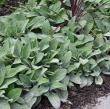
Silvery green foliage. Flowering stems are rare. USDA 4-9
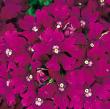
Purple blooms. Spreading foliage. Groundcover. USDA 7-10
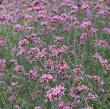
Rose-violet flowers bloom throughout the summer on this upright, tender perennial. USDA 7-11
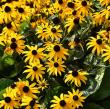
Prolific daisy-like blooms. Long bloomer. Self-seeding. Native. USDA 3-9
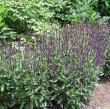
Blue-violet flowers. Fragrant foliage. Long bloomer. Upright and clumping. USDA 4-8
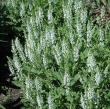
Showy white blooms. Fragrant foliage. Tolerates deer & drought. USDA 4-8
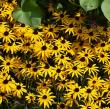
Plant Height: 24 inches
Flower Height: 3 feet
Spacing: 18 inches
Sunlight: full sun
Hardiness Zone: 3b
Other Names: Black Eyed Susan Description:
This vigorous variety has excellent disease and pest resistance; large yellow flowers with narrow petals and dark brown cones in late summer to early fall; ideal for gardens and containers; will freely self sow when seedheads are not picked
Ornamental Features:
Deam's Coneflower has masses of beautiful yellow daisy flowers with dark brown eyes and a orange flare at the ends of the stems from late summer to early fall, which are most effective when planted in groupings. The flowers are excellent for cutting. Its pointy leaves remain dark green in color throughout the season.
Landscape Attributes:
Deam's Coneflower is an herbaceous perennial with an upright spreading habit of growth. Its medium texture blends into the garden, but can always be balanced by a couple of finer or coarser plants for an effective composition.
This is a relatively low maintenance plant, and should be cut back in late fall in preparation for winter. It is a good choice for attracting butterflies to your yard, but is not particularly attractive to deer who tend to leave it alone in favor of tastier treats. Gardeners should be aware of the following characteristic(s) that may warrant special consideration: Self-Seeding
Deam's Coneflower is recommended for the following landscape applications:
- Mass Planting
- General Garden Use
- Container Planting
Planting & Growing:
Deam's Coneflower will grow to be about 24 inches tall at maturity extending to 3 feet tall with the flowers, with a spread of 24 inches. When grown in masses or used as a bedding plant, individual plants should be spaced approximately 18 inches apart. It grows at a fast rate, and under ideal conditions can be expected to live for approximately 15 years. As an herbaceous perennial, this plant will usually die back to the crown each winter, and will regrow from the base each spring. Be careful not to disturb the crown in late winter when it may not be readily seen!
This plant should only be grown in full sunlight. It prefers to grow in average to moist conditions, and shouldn't be allowed to dry out. It is not particular as to soil type or pH. It is highly tolerant of urban pollution and will even thrive in inner city environments. This species is native to parts of North America. It can be propagated by division.
Deam's Coneflower is a fine choice for the garden, but it is also a good selection for planting in outdoor pots and containers. With its upright habit of growth, it is best suited for use as a 'thriller' in the 'spiller-thriller-filler' container combination; plant it near the center of the pot, surrounded by smaller plants and those that spill over the edges. It is even sizeable enough that it can be grown alone in a suitable container. Note that when growing plants in outdoor containers and baskets, they may require more frequent waterings than they would in the yard or garden.
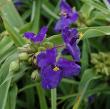
Large indigo blooms. Tolerates rabbits and moisture. Native. USDA 3-9
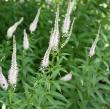
Elegant and showy soft spikes of white, pale pink, or bluish purple flowers. Provides a strong accent and good vertical height. USDA 3-8
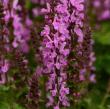
Large deep rose flower spikes. Clumping-grey green foliage. USDA 4-9
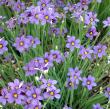
Violet blooms. Grass-like foliage. Self-seeding native. Clumping. USDA 4-8
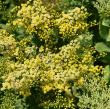
Yellow blooms. Upright foliage. Compact habit. Clump-Forming. USDA 5-8
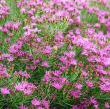
Purple blooms. Fine foliage. Well branched. Compact habit. USDA 4-9
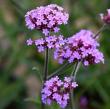
Dense clusters of small, violet flowers. Long bloomer. Toothy dark green leaves. USDA 7-11
33 found, showing page 2 of 3